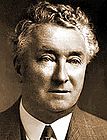Tasmanian state election, 1922
|
|
|||||||||||||||||||||||||||||||||||||||||||||
|---|---|---|---|---|---|---|---|---|---|---|---|---|---|---|---|---|---|---|---|---|---|---|---|---|---|---|---|---|---|---|---|---|---|---|---|---|---|---|---|---|---|---|---|---|---|
|
|||||||||||||||||||||||||||||||||||||||||||||
|
All 30 seats to the House of Assembly |
|||||||||||||||||||||||||||||||||||||||||||||
|
|||||||||||||||||||||||||||||||||||||||||||||
|
|||||||||||||||||||||||||||||||||||||||||||||
A general election for the House of Assembly was held in the Australian state of Tasmania on 10 June 1922.
The incumbent Premier of Tasmania at the time of the 1922 election was Walter Lee of the Nationalist Party. Before the election, a new party had emerged, the Country Party, a conservative party aiming to represent farmers and rural interests, led by Ernest Blyth. The Labor Party was led by Joseph Lyons.
Tasmanian state election, 10 June 1922
House of Assembly
<< 1919 — 1925 >>
The emergence of the Country Party split the anti-Labor vote at the 1922 election, and the Nationalist Party lost four seats to them, handing them the balance of power. Despite surviving a no-confidence vote, Lee resigned and recommended that the Governor of Tasmania send for Blyth. Blyth organised a meeting between the Nationalist and Country parties, and they agreed to form Tasmania's first coalition government with John Hayes as Premier.
...
Wikipedia



